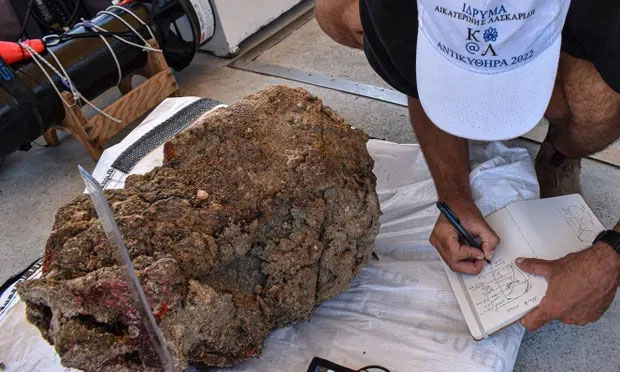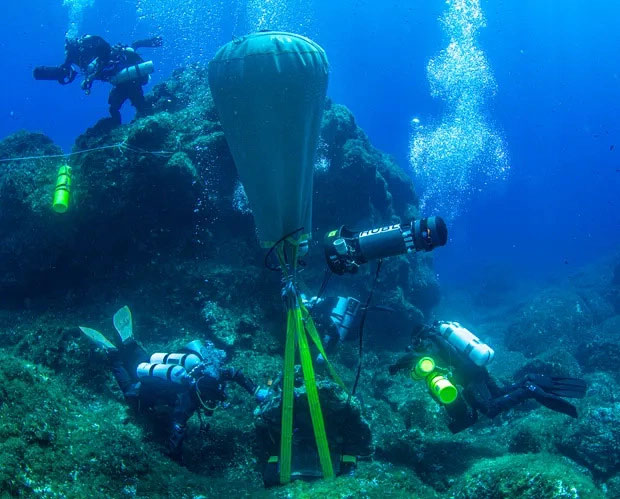Archaeologists have discovered the head of a statue of the demigod Hercules in the wreck of a Roman ship, located 50 meters beneath the sea near Antikythera Island, Greece.
The ship was accidentally discovered about 120 years ago in the vicinity of Antikythera Island, Greece. It is considered the most artifact-rich shipwreck found to date.
The latest discovery by archaeologists inside the ship includes the head of a statue of the demigod Hercules, according to the Guardian.

The head of the Hercules statue found near Antikythera Island, Greece. (Photo: Guardian).
“In 1900, divers recovered an ancient statue of Hercules from the seabed, and now we are likely to have found the head of that statue,” said Professor Lorenz Baumer, the archaeologist leading the artifact recovery project from the shipwreck at the University of Geneva.
“It is a beautifully crafted piece made of marble. This head is twice the size of an average human, with a thick beard, short hair, and a meticulously carved face. There is no doubt this is the head of the Hercules statue,” Baumer stated.
In addition to the head of the Hercules statue, archaeologists also found the base of another marble statue, along with various ship equipment. The scientists uncovered these artifacts after removing 8.5 tons of stone that were covering part of the ship.
Over the course of three weeks, a team of professional divers and archaeologists worked at a depth of 50 meters underwater, in an area that had never been explored before.
“Due to the depth of this area, we could only stay for about 30 minutes each dive. However, we now have a deeper understanding of the structure, crew, and the cargo that this ship was carrying,” Baumer explained.

The process of recovering artifacts from the shipwreck at a depth of 50 meters beneath the sea. (Photo: Guardian).
According to archaeologists, this ship sank due to a storm in the first half of the 1st century BC and was discovered by divers in 1901.
Alongside ancient statues and pottery, one of the most famous discoveries inside the ship is a device used to measure the movements of the Sun, Moon, and planets, which scientists consider to be the first analog computer on Earth.
The reason why this device, known as the Antikythera mechanism, was aboard the ship remains a mystery.
Future research expeditions may shed more light on the mysteries surrounding this ship. Professor Baumer mentioned that his team has several hypotheses about what scientists might find in upcoming research trips.
“You can never know what archaeology will reveal in the future, but what we can be sure of is that the shipwreck area around Antikythera Island is rich in artifacts. This is one of the most artifact-rich areas ever discovered,” Baumer remarked.


















































